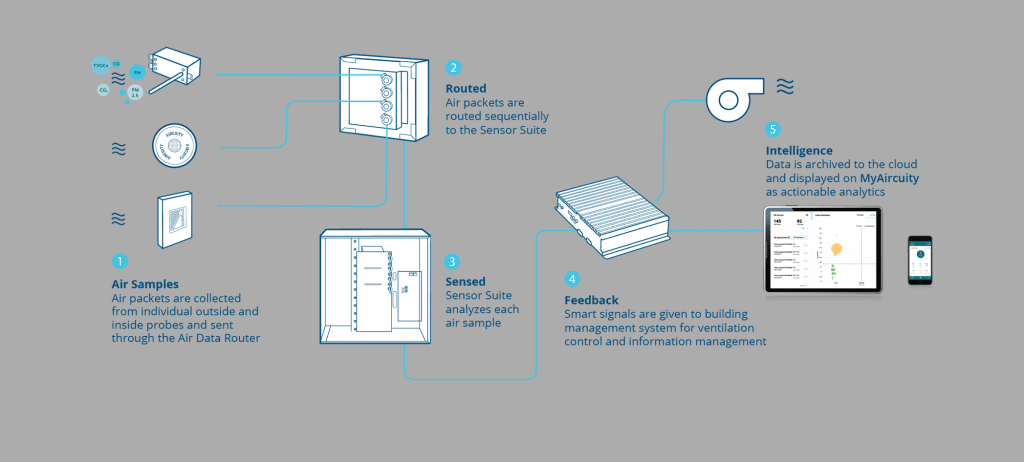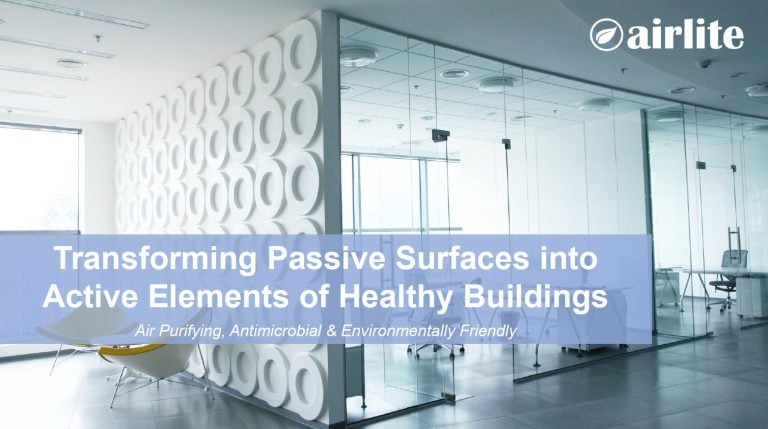Aircuity

Problem Addressed
Poor indoor air quality – 90% of our time is spent indoors where the air often contains 2-5 times the pollutants of outdoor air (US EPA). Studies show that a green building can have a significant impact on occupants’ productivity and cognitive performance. Optimising ventilation enhances health and helps drive core business outcomes. Organisations are increasingly looking to healthy buildings to help attract and retain tenants, employees and students.
This solution was sourced in response to one of UKGBC’s past challenges on ‘Linking Building Occupancy to Energy Use’.
Case Study
Bristol Community College was the first net zero lab in the USA. Aircuity’s solution helped Bristol Community College achieve net zero while enhancing safety in the lab. Aircuity enabled the reduction of air change rates, optimised the amount of fresh air ventilation in the labs and enhanced the overall environment for staff and students. Aircuity is also in half a dozen net zero energy k-12 schools.
Facts and Figures
This page presents data, evidence, and solutions that are provided by our partners and members and should therefore not be attributed to UKGBC. While we showcase these solutions for inspiration, to build consensus, and create momentum for climate action, UKGBC does not offer commercial endorsement of individual solutions. If you would like to quote something from this page, or more information, please contact our Communications team at media@ukgbc.org.
Related
Indoor air quality certification

Air quality sensing and monitoring

cTrap

Air purifying paint

